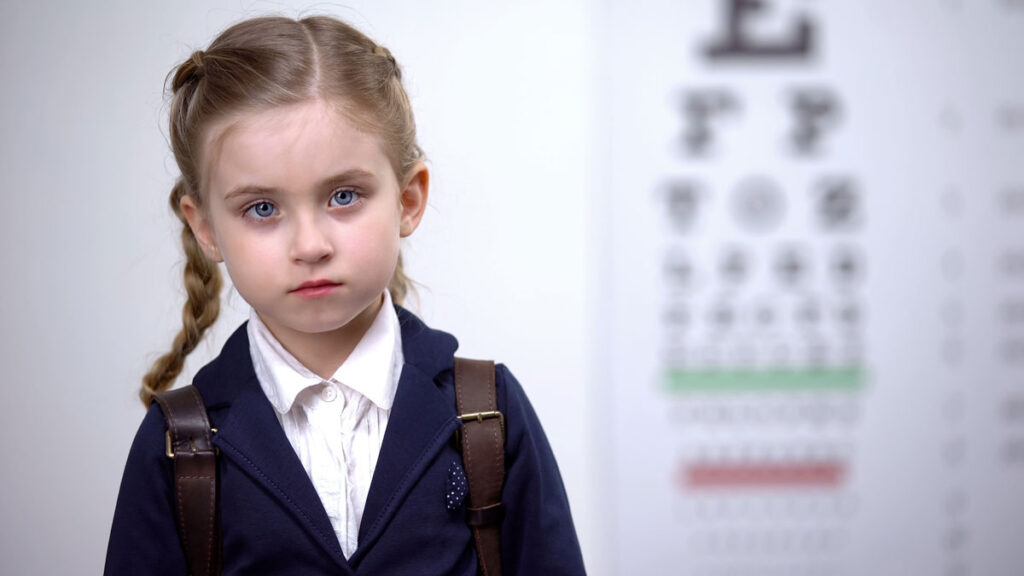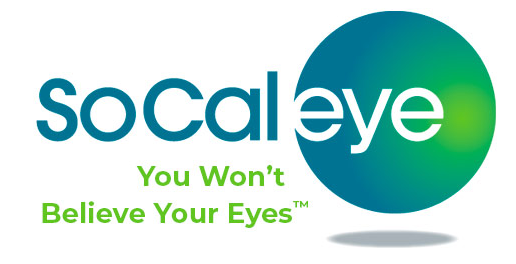
Myopia is on the rise in the United States and around the world with staggering predictions by the World Health Organization that by 2050 over 50% of the world’s population will be myopic. The condition begins in children between the ages of 6 and 12 and can grow worse over time with some more severe longer-term ramifications on vision health.
What is Myopia?
Often referred to as nearsightedness, is a refractive error in the eye. The error occurs when light is no longer bent or refracted correctly by the eye and as a result, images become blurry when at a distance. Close-up focusing remains fine. Myopia occurs when the eye grows longer than normal or has a cornea that is too steep. As a result, light rays focus in front of the retina instead of on it causing the distant object to be out of focus or blurry. Myopia can be categorized as Mild, Moderate, or High Severity depending on the magnitude of the refractive error and the amount of correction needed. Typically, any prescription greater than -6.00 diopters is High Severity. Mild can be considered at as little -1.00D.
Myopia Causes and Risk Factors
Causes
Myopia is typically first detected in children between the ages of 6 to 12 years old. Evidence suggests that there may be a genetic or hereditary component to the condition. According to studies, there is a 25% chance that a child will develop myopia if one of their parents is myopic. This number jumps to 50% if both parents are myopic.
It is also thought that environmental conditions can enhance or accelerate nearsightedness. A recent Taiwanese study found that sunlight, time spent outdoors, and sporting activities, were all found to be ways of reducing or slowing the onset of myopia. Similar studies have pointed to excessive screen time on small digital devices as contributors to myopia.
Myopia Symptoms and Detection
Some of the signs and symptoms of myopia to look out for:
- Eyestrain and Headaches.
- Squinting to see properly, sitting in the front row in class, or blinking.
- A decline in educational performance or complaints that your child can’t see the whiteboard.
Parental vigilance is critical and signs that your child is becoming un-engaged or is struggling in school could point to a vision problem like myopia.
Myopia Treatment
For those with typical myopia, the prognosis is good. With early detection most cases of Myopia can be corrected with eyeglasses, contact lenses or LASIK. Full time wearing of glasses or contact lenses may not even be necessary.
A number of options exist for the treatment of nearsightedness or myopia.
- Eyeglasses, Prescription Eye Drops and Contact Lenses: Eyeglasses or contact lenses are the most common methods of correcting myopia symptoms. They work by refocusing light rays on the retina, compensating for the shape of your eye. Specialty contact lenses have been developed specifically to address myopic conditions.
- Refractive Surgery: In some cases, people may choose Laser Eye Surgery to correct myopia. These refractive surgery procedures improve the patient’s vision by reshaping the cornea. The reshaped cornea focuses light properly onto the retina. Options may include LASIK, PRK, or even a Refractive Lens Exchange. Refractive surgery maybe an option once the eye has stopped growing, typically after age 18.
- Orthokeratology or OrthoK: OrthoK uses a series of gas permeable contact lenses to slowly reshape and gently flatten the cornea and reduce myopia while your child sleeps. The lenses are worn only at night and the eye will retain this new shape for 20 hours. Vision improvement is temporary. After you stop using the lenses, your cornea goes back to its original shape, and myopia returns.
- Sunshine and a Digital Diet: Although not a cure for nearsightedness, SoCal Eye recommends more outdoor time for kids and reduced time, or a “diet” placed on computers and mobile devices. These practices are believed to slow the progression of myopia.
SoCal Eye and Myopia
SoCal Eye provides eye care for all ages (starting at six years old) and our doctors provide comprehensive eye care covering all major sub-specialties in ophthalmology. We have two offices to care for you, and serve the greater Long Beach area, including Seal Beach, Cerritos, Cypress, Garden Grove, and Huntington Beach. Treatment begins with a comprehensive eye exam. Schedule an Appointment today at LAKEWOOD (562) 531-2020, LOS ALAMITOS (562) 598-7728 or send us an Online Consultation Request



